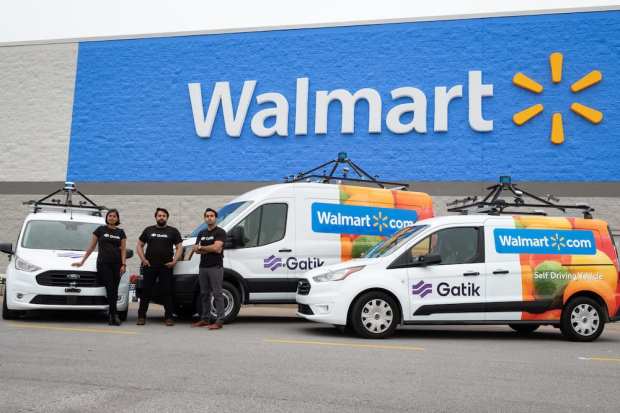Gatik Partners With Walmart, Scores $4.5M In Funding

A two-year-old self driving startup called Gatik has raised $4.5 million in seed funding, and also announced a commercial partnership with Walmart for deliveries, according to reports.
The round was led by Innovation Endeavors, with Dynamo Venture Capital, AngelPad, Fontinalis Partners and Trucks Venture Capital also participating. Gatik said it would soon announce more commercial partnerships.
“We are a strong believer in autonomous vehicle technology, and we look forward to learning more about how Gatik’s innovation can benefit our customers in the coming months,” Walmart’s Senior Vice President of Digital Operations Tom Ward said about the partnership.
Gatik’s technology allows for the operation of Level 4 autonomous commercial trucks and vans, which mean they are able to operate with only a limited amount of human input in specifically approved areas. The vehicles will be used for deliveries, for which the company has retrofitted a fleet of Ford Transit vans. The company has been testing the vans on public roads in California since early 2018. Its software ensures that goods are transported 50 percent cheaper in city environments.
“There is a huge gap between autonomous Class 8 big rig trucks, which can only operate on highways, and smaller, automated vehicles such as sidewalk robots and Nuro vehicles, which are restricted by operation speed, capacity, distance and the curb,” said Trucks Venture Capital Founding General Partner Reilly Brennan. “Gatik fills the critical ‘middle mile’ part of logistics, which is only becoming more valuable as a layer in the $800 billion logistics ecosystem. We’re inspired by Gatik’s vision and expertise to solve the untapped market of urban short-haul delivery logistics.”
Gatik was started by CEO Gautam Narang and CTO Arjun Narang, along with Chief Engineer Apeksha Kumavat.
“Our team is made up of the very best minds from academia and industry,” said Kumavat. “Collectively, we have made critical contributions and technological breakthroughs in robotics and machine learning that have enabled us to build and launch an autonomous service that is filling a gap in the market where the vehicles are on the road (not on the sidewalk), operating on city roads and traveling longer distances (typically up to 100 miles), and with a much higher payload.”
